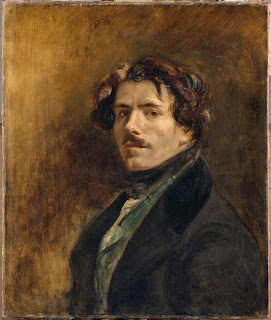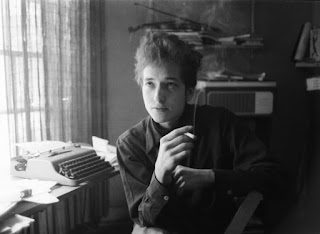Animals Have Died
How Many Animals Have Died for Damien Hirst’s Art to Live? We Counted.
Nearly one million, by our conservative estimate.
Damien Hirst is back. More than a decade after he last made headlines, the artist has a new exhibition at François Pinault’s Palazzo Grassi and Punta Della Dogana in Venice with a new body of work that delves into the imagined story of an ancient collector and the shipwreck that consigned his treasures to the bottom of the sea. One of the many noteworthy elements of the show? It doesn’t contain the unusual art material that has powered Hirst’s most famous work: the dead bodies of animals.
Ever since his explosive entry to the British art scene with his 1990 masterpiece One Thousand Years—a vitrine featuring a rotting cow skull that breeds maggots that become flies that meet their end from a buzzing bug zapper above—Hirst has made mortality the great theme of his oeuvre. He deploys real cadavers in gallery settings to confront viewers with the implacable fact of death. As the market for Hirst’s work grew to astronomic heights, capped off by his $200 million Sotheby’s sale in 2008, his memento-mori works took on an increasingly ironic edge, as if to underscore that money can’t buy the one thing everyone craves: not to die.
But what of the animals who laid down their lives for the privilege of partaking in Hirst’s grand conceit? Over the years, animal rights groups have regularly inveighed against the artist, with the group 100% Animalisti targeting his Venice show even before it opened by depositing 88 pounds of manure on the steps of the lavish exhibition site. Certainly there have been many, many animals who have passed through the abattoir of Hirst’s studio.
We at artnet News have decided to tally how many.
The admittedly partial data amassed here is derived primarily from the extensive catalogue of works and exhibitions on the official Damien Hirstwebsite. Considering the numerous teeny beasties involved, it’s a daunting task—you could call this project “The Physical Impossibility of Counting All the Dead Bugs.” Throughout his career, Hirst has sourced his materials through a variety of methods and from a variety of sources, including Australian shark-hunter Vic Hislop, the London-based taxidermist Emily Mayer, and London’s own fabled Billingsgate Fish Market. Some of the animals were dead before Hirst came around, while others met ends tailored to their artistically-conceived resting places. They are all united by their final resting place: the domain of the thanatotic artist. “Cut us all in half, we’re all the fucking same,” Hirst said in conversation with writer Gordon Burn.
Here is our estimate of the size of Hirst’s menagerie, divided into categories of different critters.
CUDDLY FARM ANIMALS
SERIES: Mostly “Natural History” (1991–2014)
VICTIMS: 13 sheep, 7 Holstein Friesian cows, 5 baby calves, 4 bulls, 3 baby horses (with protruding horns to resemble unicorns), 2 pigs, 1 brown bear, and 1 zebra.
BODY COUNT: 36
METHODOLOGY: This series encapsulates almost the entirety of Hirst’s career and demonstrates his belief that one must “kill things in order to look at them.” To determine an approximate list of terrestrial mammals that have been used as centerpieces in Hirst’s macabre tableaux—by far his most famous works, and arguably his most important contributions to art history—we counted the critters individually as they appear in his formaldehyde-filled vitrines. Note: Bisected, flayed, or otherwise disemboweled beings are included in this tally, as long as they still retain some degree of flesh; skulls and skeletons are not. (See “MISCELLANEOUS REMAINS.”)
VICTIMS: 13 sheep, 7 Holstein Friesian cows, 5 baby calves, 4 bulls, 3 baby horses (with protruding horns to resemble unicorns), 2 pigs, 1 brown bear, and 1 zebra.
BODY COUNT: 36
METHODOLOGY: This series encapsulates almost the entirety of Hirst’s career and demonstrates his belief that one must “kill things in order to look at them.” To determine an approximate list of terrestrial mammals that have been used as centerpieces in Hirst’s macabre tableaux—by far his most famous works, and arguably his most important contributions to art history—we counted the critters individually as they appear in his formaldehyde-filled vitrines. Note: Bisected, flayed, or otherwise disemboweled beings are included in this tally, as long as they still retain some degree of flesh; skulls and skeletons are not. (See “MISCELLANEOUS REMAINS.”)
SEA CREATURES
SERIES: “Natural History” (1991–2014); “Fish in a Formaldehyde Tank” (1994); “Beautiful Inside My Head Forever” (2008)
VICTIMS: 17 sharks, 668 individual fish of at least 38 varieties
BODY COUNT: At least 685
METHODOLOGY: For the exact numbers, we methodically counted the aquatic dwellers encased in Hirst’s steel-and-glass vitrines: 627 of the fish are suspended in perspex in a matrix formation—a continuation of Hirst’s obsessive interest in 19th-century classification systems. In a work aptly named Here Today, Gone Tomorrow, 41 fish are juxtaposed with shelves displaying corresponding fish skeletons. We also traced the various iterations of the infamous piece The Physical Impossibility of Death in the Mind of Someone Living. While the original 14-foot tiger shark appeared in the 1997 “Sensation” show, it was improperly preserved and thus replaced in 2006, two years after billionaire art collector Steve Cohen purchased it for $8 million. Hirst also reportedly keeps a few specimens on ice, literally, should the need arise.
VICTIMS: 17 sharks, 668 individual fish of at least 38 varieties
BODY COUNT: At least 685
METHODOLOGY: For the exact numbers, we methodically counted the aquatic dwellers encased in Hirst’s steel-and-glass vitrines: 627 of the fish are suspended in perspex in a matrix formation—a continuation of Hirst’s obsessive interest in 19th-century classification systems. In a work aptly named Here Today, Gone Tomorrow, 41 fish are juxtaposed with shelves displaying corresponding fish skeletons. We also traced the various iterations of the infamous piece The Physical Impossibility of Death in the Mind of Someone Living. While the original 14-foot tiger shark appeared in the 1997 “Sensation” show, it was improperly preserved and thus replaced in 2006, two years after billionaire art collector Steve Cohen purchased it for $8 million. Hirst also reportedly keeps a few specimens on ice, literally, should the need arise.
CREATURES BLESSED WITH THE GIFT OF FLIGHT
SERIES: “Fly Paintings and Sculptures” (2002–2008); “Butterfly Colour Paintings” (1989–2009); “Entomology Cabinets and Paintings” (2008–2012); “Kaleidoscope Paintings” (2001–2008)
VICTIMS: 850,000 houseflies plus 111 generations; 45,000 insects of more than 3,000 species; 17,000 butterflies of the Own and Heliconius species; 5 birds.
BODY COUNT: 912,005
METHODOLOGY: The vast majority of the animals in Hirst’s art are of the flying variety, from his ubiquitous butterfly “paintings” to “monochromes” made from heaps of common black houseflies. Given the sheer size of the swarm, assigning a number here was a challenge. For the housefly works—which range from canvases lightly sprinkled in flies to those fully encrusted in them— we employed some rudimentary math, dividing the surface area of each “Fly Painting” by the size of an average housefly (8 millimeters). We then doubled that total to account for the multiple layers in many of the works in this series. The most difficult task was to quantify the number of critters that took part in Hirst’s ‘life-cycle in a box’, A Thousand Years, which breeds maggots that become flies. It is unknown how many flies were first introduced to the science experiment, but female flies lay eggs approximately every six days. Since the work has been exhibited 10
VICTIMS: 850,000 houseflies plus 111 generations; 45,000 insects of more than 3,000 species; 17,000 butterflies of the Own and Heliconius species; 5 birds.
BODY COUNT: 912,005
METHODOLOGY: The vast majority of the animals in Hirst’s art are of the flying variety, from his ubiquitous butterfly “paintings” to “monochromes” made from heaps of common black houseflies. Given the sheer size of the swarm, assigning a number here was a challenge. For the housefly works—which range from canvases lightly sprinkled in flies to those fully encrusted in them— we employed some rudimentary math, dividing the surface area of each “Fly Painting” by the size of an average housefly (8 millimeters). We then doubled that total to account for the multiple layers in many of the works in this series. The most difficult task was to quantify the number of critters that took part in Hirst’s ‘life-cycle in a box’, A Thousand Years, which breeds maggots that become flies. It is unknown how many flies were first introduced to the science experiment, but female flies lay eggs approximately every six days. Since the work has been exhibited 10
times for a sum total of 111 weeks, we estimate upwards of 111 generations of flies have taken part in Hirst’s simulated circle of life.
As for the butterflies, we got our number the old-fashioned way: by painstakingly counting them. (In one series alone, 1,629 were affixed across 62 canvases.) To that, we added the reported 9,000 that were killed over the course of Hirst’s 23-week retrospective at Tate Modern, which featured the live-butterfly spectacle In and Out of Love that one outlet referred to as “butterfly Hiroshima.”
MISCELLANEOUS REMAINS
SERIES: “Natural History”(1991–2014); “Innocence Lost”; “Lost Love/Love Lost” (2000)
VICTIMS: 46 pork sausages, one diamond-encrusted human skull, 624 internal organs from 8 cows, 16 cow skulls, 41 fish skeletons, one gilded woolly mammoth skeleton.BODY COUNT: 729
METHODOLOGY: This hodgepodge section is for those materials that defy standard animal kingdom classification—but we felt it necessary to make note of the various entrails, bones, and byproducts that Hirst has included in his repertoire. The pickled internal organs of eight cows, for instance, are preserved inside jars lined up on shelves like a creepy medicine cabinet. Eleven sausages are included in the “Natural History” vitrine series. An additional 35-edition work, Innocence Lost, comprises a single-link sausage submerged in an alcohol-filled baby bottle. According to a butcher we consulted, it would take two whole pigs to create 46 pork sausages.
VICTIMS: 46 pork sausages, one diamond-encrusted human skull, 624 internal organs from 8 cows, 16 cow skulls, 41 fish skeletons, one gilded woolly mammoth skeleton.BODY COUNT: 729
METHODOLOGY: This hodgepodge section is for those materials that defy standard animal kingdom classification—but we felt it necessary to make note of the various entrails, bones, and byproducts that Hirst has included in his repertoire. The pickled internal organs of eight cows, for instance, are preserved inside jars lined up on shelves like a creepy medicine cabinet. Eleven sausages are included in the “Natural History” vitrine series. An additional 35-edition work, Innocence Lost, comprises a single-link sausage submerged in an alcohol-filled baby bottle. According to a butcher we consulted, it would take two whole pigs to create 46 pork sausages.
GRAND TOTAL: 913,450
“It’s amazing what you can do with an E in A-Level art, a twisted imagination, and a chainsaw,” Hirst declared, accepting the Turner Prize in 1995. Indeed.
Kind Regards.








Comments
Post a Comment
Thank you for your response
Kind regards Pierre